
How To: Inspect Your Bike
Ready for the season? We’ll show you how to prepare your bike for the upcoming season and which parts require special attention.
For biking to be fun, the chain must run cleanly. This means you should check it regularly for wear! Find out here how to do it!
Everyone always talks about wear and tear and the timely replacement of drivetrain components. But how do I even know when my drivetrain is worn out? Or at what point does it no longer make sense to adjust the gears because the bearing of the rear derailleur or front derailleur has worn out? In this post, we want to give you a few clues that you can use to gauge the wear of your chain.
When you pedal, the chain is put under extreme tensile load. This causes chains to stretch out over time. The more stretched a chain is, the morn out it is. Chain wear indicator tools use this stretch value to gauge the degree of wear.
But the chain wears out not only due to the force applied when pedalling, but also due to skewing and jumps over sprockets or chainrings when shifting gears. When upshifting, the chain is pressed against the next larger sprocket by the rear derailleur and guided onto the sprocket via ramps. Due to this coaxial load in the skew, the functional play between the chain links and the pins increases over time.
The Rohloff chain wear indicator, the Caliber 2, uses the stretch length to gauge the amount of wear a chain has. The Caliber has 2 sides, and both sides show you when you should replace the chain to protect your sprockets and chainrings from wearing out. The S (steel) side shows a greater amount of chain stretch than the A (aluminium) side. If your cassette is made of two materials, e.g. aluminium and steel, you should use the softer material.
Chains for freeride and downhill use are a special case. These disciplines require relatively little pedalling, but you ride a lot through hard terrain. Here the chain swings in all directions. Due to the increased horizontal movement of the chain, the bearings often fail laterally before the chain can stretch out enough to gauge the wear with an indicator.
If you want to measure the amount of stretch a chain has, first place the small tip with the notch on one roller of the chain.
Then guide the chain wear indicator down towards the chain. If the long tip doesn’t drop in, you can continue to ride the chain, but if the tip drops through, you should change the chain to prevent premature sprocket wear. The length should be measured at several points along the chain to avoid inconsistencies.
However, pay attention to exceptions!
This rule does not apply to Campagnolo chains, which should not be measured with chain wear indicator tools. To gauge the wear of Campagnolo chains, you measure the distance between the rollers over 6 outer plates. If this is 132.6 mm or more, you must replace the chain. The value applies to 10 and 11-speed chains and the measurement should be made on 5 different chain segments.
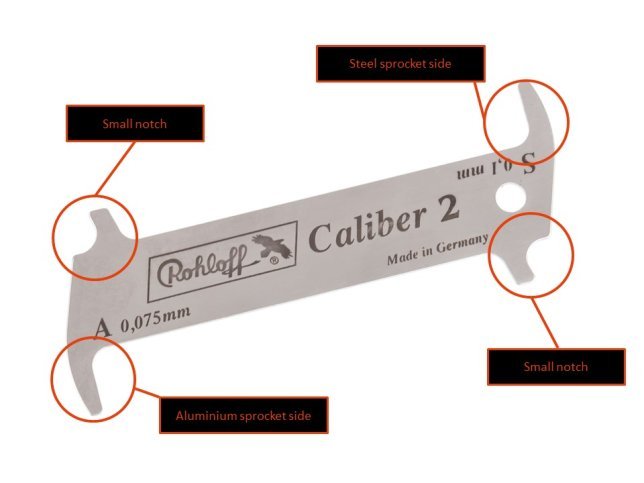
The Rohloff Caliber 2
If the A-side gets caught in the chain, then you can continue riding with it.
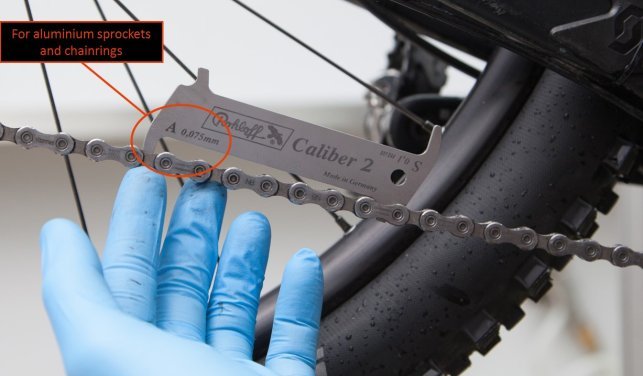
This chain can still be ridden.
Is the A-side falling through? If you ride with aluminium or titanium sprockets, you should replace your chain now to protect your sprockets from premature wear.
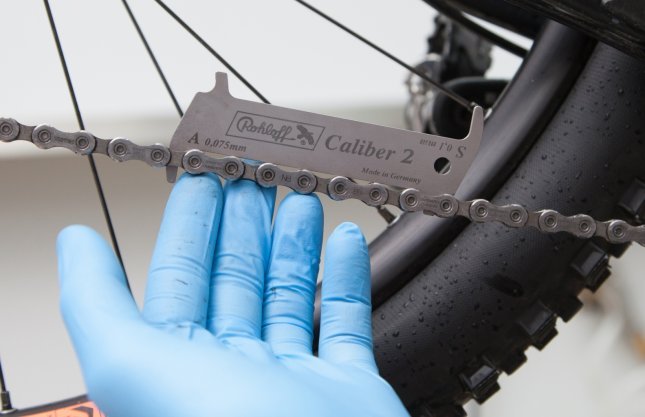
If you have aluminum or titanium sprockets you need to change the chain.
If the S-side gets caught in the chain, then you can continue riding with it.
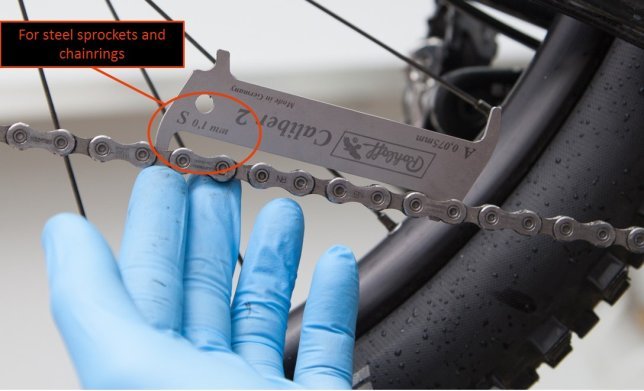
This chain can still be ridden.
Is the S-side falling through? If you ride with steel sprockets, you should replace your chain now to protect your sprockets from premature wear.
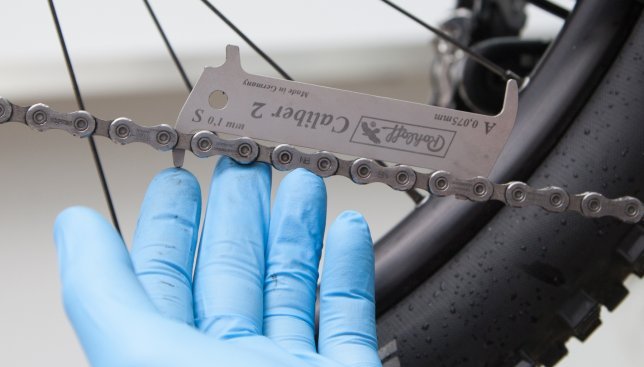
If you ride steel sprockets, its time to change the chain.